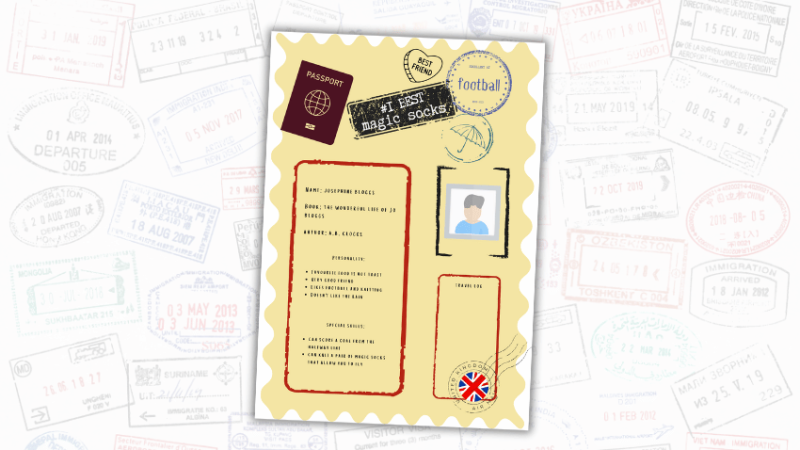How to explain sentences to primary children

Debra Myhill’s masterclass takes you through all the elements of this vital unit of meaning, from capital letter to…

- by Debra Myhill

It’s actually quite difficult to explain what a sentence is. If children are taught rigid definitions or rules, they are likely to be puzzled by examples that don’t conform to expectations and may be less likely to take risks and experiment with variation in their own writing.
Instead, teaching should emphasise how flexible the sentence is as a unit of meaning, and build children’s understanding of the choices available to them that will achieve specific effects in different writing contexts.
All the elements
A sentence can consist of just one clause (a simple sentence with one finite verb) or a number of clauses that are linked through coordination or subordination. Each clause in a sentence is made up of different combinations of the following elements: the subject (S), the verb (V), the object (O), the complement (C) and the adverbial (A). It’s important that children know each element can consist of one word, or several.
It is our understanding of syntactic possibilities and probabilities that can help us notice unusual sentence patterns. Look at this sentence from Michael Morpurgo’s Arthur, High King of Britain:
“And, to my amazement, up out of the lake came a shining sword, a hand holding it, and an arm in a white silk sleeve.”
The order of elements in most sentence subjects is subject + verb (SV), but here, the subject is placed after the verb. Moreover, both the subject and the finite verb come late in the sentence, after the adverbial element (… to my amazement, up out of the lake…).
Subject-verb inversions delay the revealing of the subject, for different purposes according to context. Here, you might think it builds up the drama, or even represents grammatically the visual effect of Excalibur rising out of the water.
In another context, it could build suspense or create surprise, or allow the writer to foreground different information at the beginning of the sentence. Manipulating syntactic structure, therefore, is an important way of achieving sentence variety.
According to type
All sentences can be grouped into two main categories: minor (or irregular), and major (or regular). The former do not follow all the syntactic rules. They are common in signs, labels, titles and idioms, as well as in many of the texts children read, and are a frequent feature of effective writing.
In this example, from Michael Rosen’s Don’t Forget Tiggs, only the second sentence is complete:
“And then, Mr Hurry. Off he hurried. Out of the house, down the road, off to work. Whoosh!”
Major sentences are the most common type, and typical of more formal writing. They always contain a finite verb, usually a subject and may contain other clauses, such as an adverbial:
- Hurry! (implied second-person subject + finite verb)
- They hurried. (pronoun subject + finite verb)
- The children hurried down the road. (noun phrase subject + finite verb + adverbial)
You will see from these examples that the finite verb is the vital component in a major sentence and it’s worth spending time to secure children’s understanding of this.
Sentences are also classified according to the function they perform, and there are four different types, each with distinctive grammatical patterns.
A statement (or declarative sentence) is the most common type. Typically, the subject comes before the verb and is often placed at the beginning of a sentence, a ‘normal’ pattern that helps us spot variations, like this one: Never before had the Iron Man seen the sea.
A question (or interrogative sentence) can start with a question word (who, what, how etc) or an auxiliary verb (are, do, have etc). It can also end with a tag that invites confirmation (eg didn’t you?). A rhetorical question is structured as a query, but doesn’t require an answer: Who can say where the Iron Man came from?
A command (or imperative sentence) has an implied subject (you) and a verb in the imperative mood. It may start with ‘Do’ for emphasis or to sound polite (Do come inside), or Don’t to create a negative. In some forms it has a stated subject: Everybody, listen up! It is always in the present tense.
An exclamation expresses strong emotion, such as surprise, pleasure, humour or anger. The exclamation mark suggests the necessary tone of voice and emphasis. They are often minor sentences or interjections: A giant! Crash!
Different kinds of texts often have characteristic sentence types that children will need to be able to imitate in order to ‘sound like an expert’ – for example, instructional texts have a high proportion of commands.
Infinite variety
Confident writers deliberately vary the sentence types and structures they use. However, children’s understanding of how to do this can often be limited to such techniques as ‘adding more adjectives’ and ‘using lots of short, snappy sentences’.
Of course, there is no intrinsic merit in either of these, so it’s helpful to frame such features as possible choices, depending on the writing’s purpose. Other options include:
Different sentence lengths Short ones can be effective for making key points in an argument; stating a topic sentence in an information text; creating a quick pace, or emphasising ideas. Longer sentences can add descriptive or explanatory details. You might also consider the rhythmic patterns created when writers deliberately contrast long and short sentences.
Different clause structures A simple sentence has one clause containing a finite verb; and multi-clause sentences have two or more finite clauses, held together by coordination (a compound sentence) or a combination of finite and subordinate clauses (a complex sentence). Simple sentences can be effective for focusing attention on a single idea or argument, or drawing attention to an expressive choice of verb; coordinated clauses work to chain ideas and create pace, balance ideas and provide contrast; and subordinate clauses can be used to add layers of detail or stress the relationship between ideas.
Different sentence openers There are many ways to create thematic variety by starting a sentence in a different way, but the most common are probably: adverbs; adverbial phrases of time; prepositional phrases; finite subordinate clauses; non-finite subordinate clauses. All of these tend to perform the adverbial function in a clause, but it is helpful when teaching to consider this range of grammatical possibilities.
Debra Myhill is the co-author, along with Susan Jones, Annabel Watson and Helen Lines (all researchers at the Centre for Research in Writing, University of Exeter) of Essential Primary Grammar (Open University Press, £22.99).







